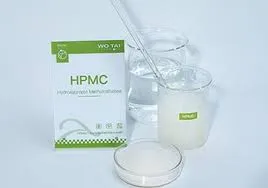
Nov . 13, 2024 11:54 Back to list
hpmc full form
Understanding HPMC The Full Form and Its Importance
HPMC, or Hydroxypropyl Methylcellulose, is a chemically modified cellulose derivative widely recognized for its versatile applications across various industries. With its unique properties, HPMC serves as a critical component in pharmaceuticals, construction, food, and personal care products. Understanding HPMC and its full form is essential for professionals in these fields, as it directly influences product formulation and effectiveness.
What is HPMC?
HPMC is derived from natural cellulose, a biopolymer that is abundant in plant cell walls. The process of making HPMC involves modifying cellulose through etherification, which incorporates hydroxypropyl and methyl groups into the cellulose structure. This modification enhances the solubility and rheological properties of cellulose, making it an instrumental ingredient in numerous applications.
Pharmaceutical Applications
In the pharmaceutical industry, HPMC serves various roles, primarily as a binder, film-former, and controlled-release agent in tablet formulations. When used as a binder, HPMC helps in maintaining the integrity of tablets during the manufacturing process and ensures that they dissolve appropriately in the digestive system. Its film-forming capabilities allow it to create protective coatings on drugs, which can enhance stability and control the release of active ingredients. Additionally, HPMC's capacity to form gels makes it suitable for use in ophthalmic preparations, providing appropriate viscosity and ensuring comfort for users.
Construction Sector
hpmc full form

HPMC is also vital in the construction industry, primarily as an additive in cement and mortar formulations. Its unique water-retention properties prevent the rapid drying of cement-based materials, allowing for improved workability and adhesion. Moreover, HPMC contributes to the thixotropic behavior of these mixtures, which facilitates ease of application while keeping the materials from slumping or running. The versatility of HPMC makes it an excellent choice for producing high-performance construction materials that meet modern building standards.
Food Industry Uses
In the food sector, HPMC acts as a food stabilizer and thickening agent. Its ability to form gels and emulsions enhances texture and mouthfeel in various food products, including sauces, dressings, and desserts. Furthermore, HPMC is noted for being non-toxic and having low-caloric content, making it a popular choice for health-conscious consumers. Its usage aligns with the growing demand for clean-label ingredients, reflecting a shift towards transparency in food formulation.
Personal Care and Cosmetic Products
HPMC also finds its way into personal care and cosmetic formulations. It is commonly used as a thickening agent in lotions, creams, and gels, helping to improve the texture and stability of these products. Its compatibility with water and oil phases makes it an ideal emulsifier in various formulations. Additionally, HPMC can act as a film-former, providing a protective layer on the skin while enhancing the overall feel of the product.
Conclusion
The significance of HPMC across various industries highlights its versatility and wide-ranging applicability. From pharmaceuticals to construction, food, and personal care products, HPMC plays a vital role in enhancing the performance and safety of formulations. As industries continuously evolve, understanding the full form and functionalities of HPMC will be crucial for professionals striving to innovate and meet consumer demands. Its eco-friendly nature and effective properties make HPMC not just a component but a key ingredient in the future of product development across multiple sectors.
-
Versatile Hpmc Uses in Different Industries
NewsJun.19,2025
-
Redispersible Powder's Role in Enhancing Durability of Construction Products
NewsJun.19,2025
-
Hydroxyethyl Cellulose Applications Driving Green Industrial Processes
NewsJun.19,2025
-
Exploring Different Redispersible Polymer Powder
NewsJun.19,2025
-
Choosing the Right Mortar Bonding Agent
NewsJun.19,2025
-
Applications and Significance of China Hpmc in Modern Industries
NewsJun.19,2025







